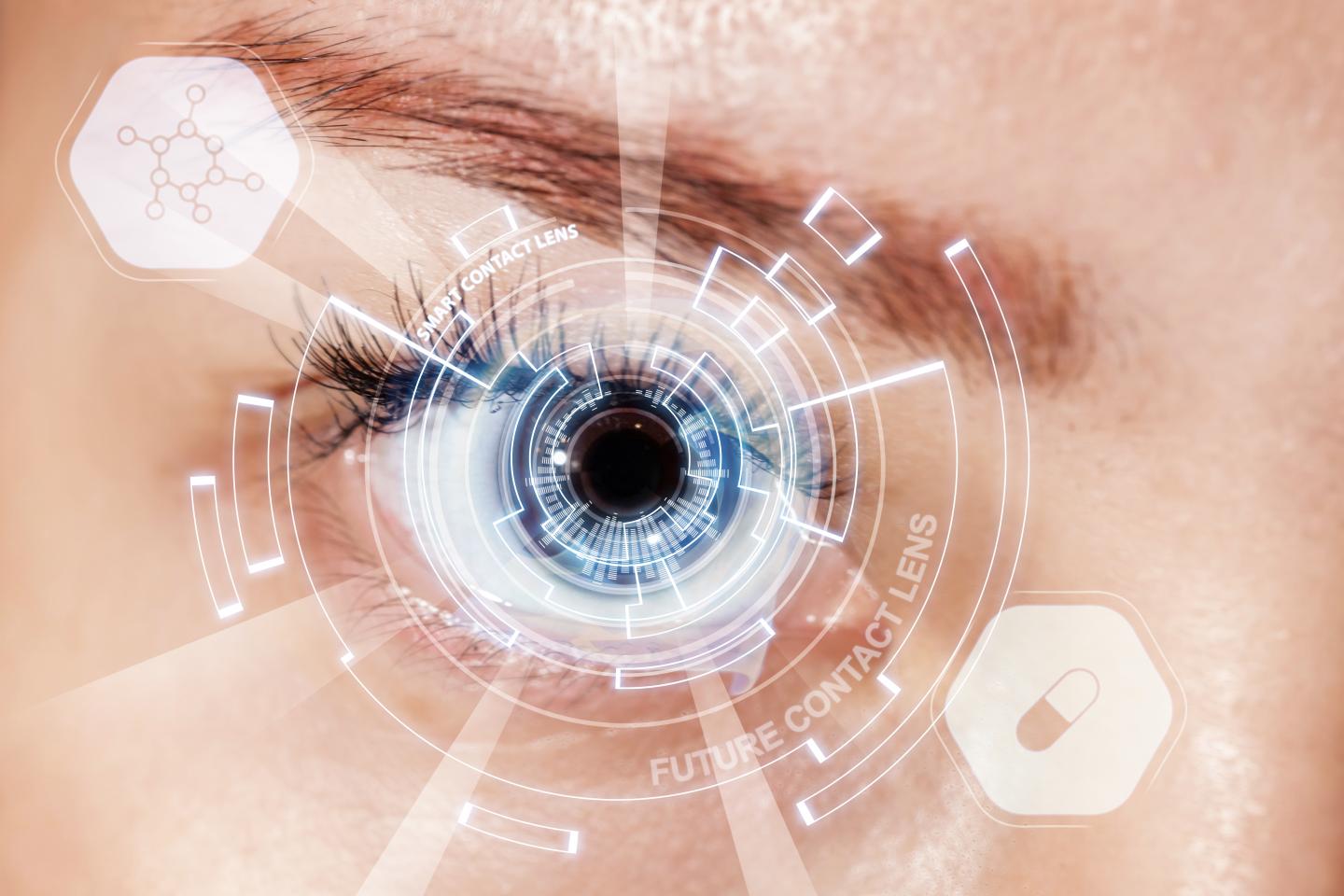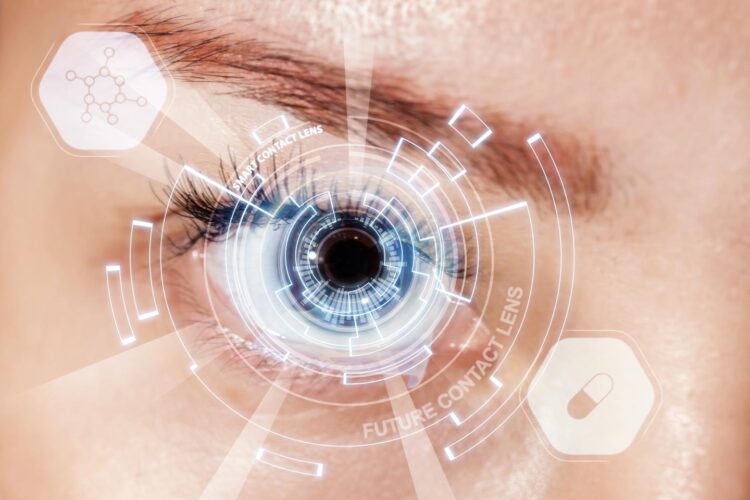Newly-published “contact lens technologies of the future” paper reviews innovative uses for disease detection and therapy, drug delivery, vision enhancement and mor

Credit: Centre for Ocular Research & Education (CORE)
WATERLOO, Ontario, March 29, 2021–A newly-published paper represents one of the most comprehensive reviews of advancements to come in contact lenses, catapulting the commonly-used medical device to applications well beyond refractive error correction.
Contact Lens Technologies of the Future (Jones L, et al.) is now in press from Contact Lens and Anterior Eye, the peer review journal of the British Contact Lens Association (BCLA). It joins nine other papers being printed in next month’s special edition as part of the BCLA-led Contact Lens Evidence-based Academic Reports (CLEAR) series.
“There are a range of diverse technologies that are shaping the future of contact lenses, in some cases already showing their potential in late-stage development initiatives and even commercially-available products,” said Lyndon Jones, director of the Centre for Ocular Research & Education (CORE) and the paper’s lead author. “Novel biomaterials, nanotechnology progress, unique optical designs, biosensing discoveries, antibacterial agents and even battery miniaturization and power transfer are coalescing like never before. The next several years will see incredible advancements and growth for an expanded contact lens category.”
Dr. Jones is considered one of the world’s foremost authorities on contact lens advancements. He holds the top contact lens ranking for 2010-2021 by Expertscape and is currently the 13th most influential optometrist researcher across all disciplines as determined by OptomRankings.com.
The extensively-referenced paper explores several areas in which innovations are anticipated to make an impact. The presence of biomarkers in the tear film will give rise to diagnostic contact lenses to help detect and monitor systemic and ocular diseases, including diabetes, cancer, and dry eye disease. Integrated circuit progress may give rise to in-lens intraocular pressure monitoring for glaucoma and even retinal vasculature imaging for early detection of diseases such as hypertension, stroke and diabetes.
Ocular disease treatment and management may likewise benefit from progress in fluid dynamics, materials science and microelectronics. Dehydration-resistant materials combined with electro-osmotic flow and reactive oxygen species-scavenging materials–when integrated into lenses–could offer alternative dry eye disease therapies. Liquid crystal cells could replicate the functionality of the pupil and iris arrangement, autonomously filtering incoming light to overcome physiological defects. Embedded, tunable spectral filtering has the potential to mitigate color vision deficiencies.
Drug delivering contact lenses may offer more accurate dosing versus traditional eye drops, increasing the residence time of a drug on the ocular surface with less exposure to elements such as blinking and non-productive conjunctival absorption, reducing the many known side effects of drugs. Delivery might come from in vitro uptake and release, incorporation of drug-containing nanoparticles into contact lens materials during the manufacturing process, and even molecular imprinting to imbue polymers with memory characteristics that aid dispensation. These techniques and related advancements will open up opportunities for contact lenses as theranostics, the multi-disciplinary medical field that combines therapeutics and diagnostics. Uniting sensing technology and microfabrication, theranostic lenses would release appropriate therapeutics based on continuous monitoring inputs, replacing more invasive procedures.
While “smart” lenses have become associated with on-eye head-up displays, the authors write that optical enhancements extend well beyond those manifestations. Customized optics could address aberrated eyes, with the front surface of a lens shaped to specifically reduce measured aberrations based on each person’s unique corneal shape. Embedded microelectronics might constantly monitor corneal gaze direction, controlling optical elements to address presbyopia in real time. Myopia control lenses are slowing axial growth in children, responding to one of the most pressing issues in eye health today. And optical and digital display discoveries hold the potential for assisting people who suffer from low vision–and then extend to the general population to replace or supplement traditional screens.
The paper concludes with an overview of packaging and storage case material and design developments that may offer improved hygiene and reduced wearer-induced contamination.
Joining Dr. Jones as one of this paper’s 14 authors is Chau-Minh Phan, a research assistant professor with CORE. Six other CORE scientists contributed to the BCLA CLEAR Reports series, serving as co-authors on papers regarding anatomy and physiology, complications, evidence-based practice, and the effect of lens materials and design.
###
About the Centre for Ocular Research & Education (CORE)
The Centre for Ocular Research & Education (CORE) was established in 1988 at the University of Waterloo’s School of Optometry & Vision Science. Over the next three decades, the organization evolved from a three-person operation into a thriving hub of basic and applied research, collaborating with sponsors, agencies and academia on advanced biosciences, clinical research and education. Its uncompromising independence and results of the highest quality have been at the heart of many of the most prominent advances in eye health. Today, its approximately 50-person team serves a range of ophthalmic sectors, including medical devices, ocular pharmaceuticals, digital technology and others, with a focus on the anterior segment. For more information, please visit core.uwaterloo.ca.
MEDIA CONTACTS
Mike McDougall, APR, Fellow PRSA or Aimee J. Lewis, McDougall Communications for CORE
[email protected] | +1.585.545.1815
[email protected] | +1.585.414.9838
Media Contact
Mike McDougall
[email protected]
Related Journal Article
http://dx.





